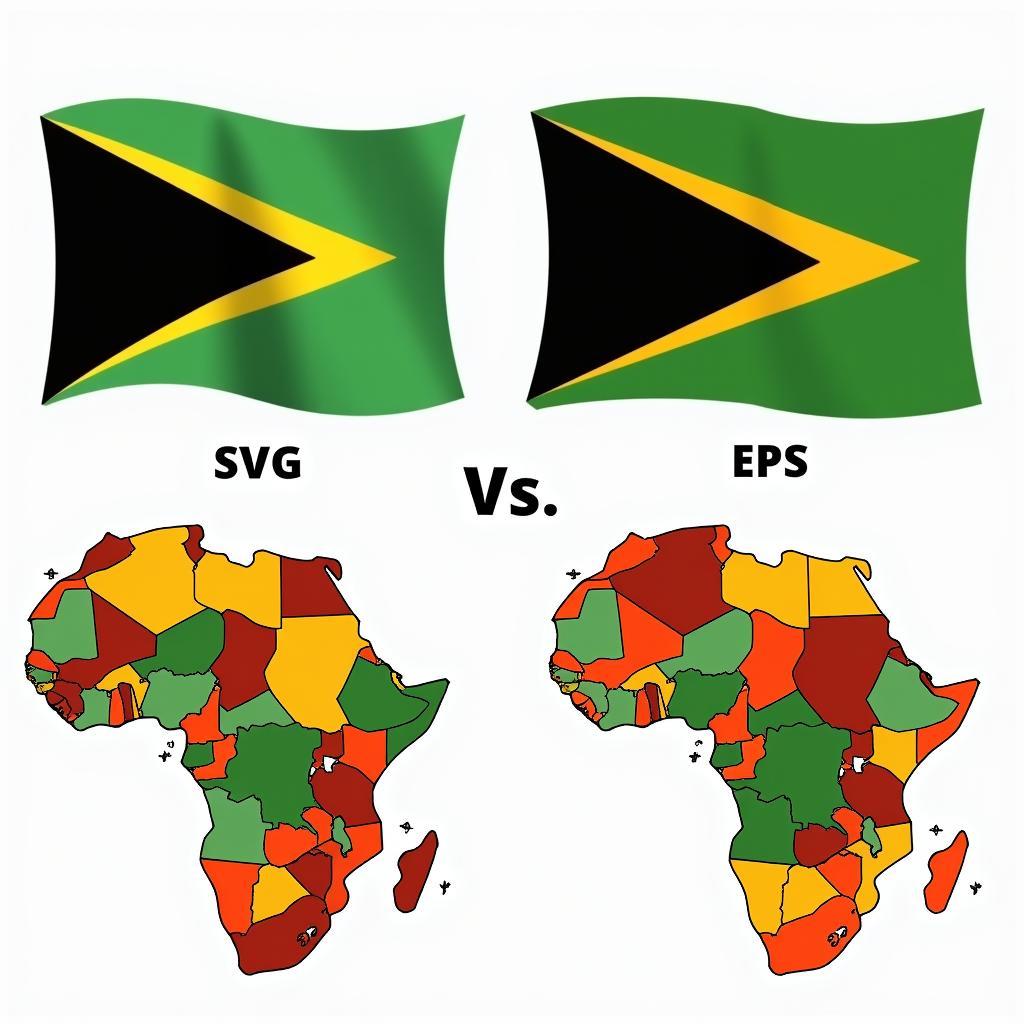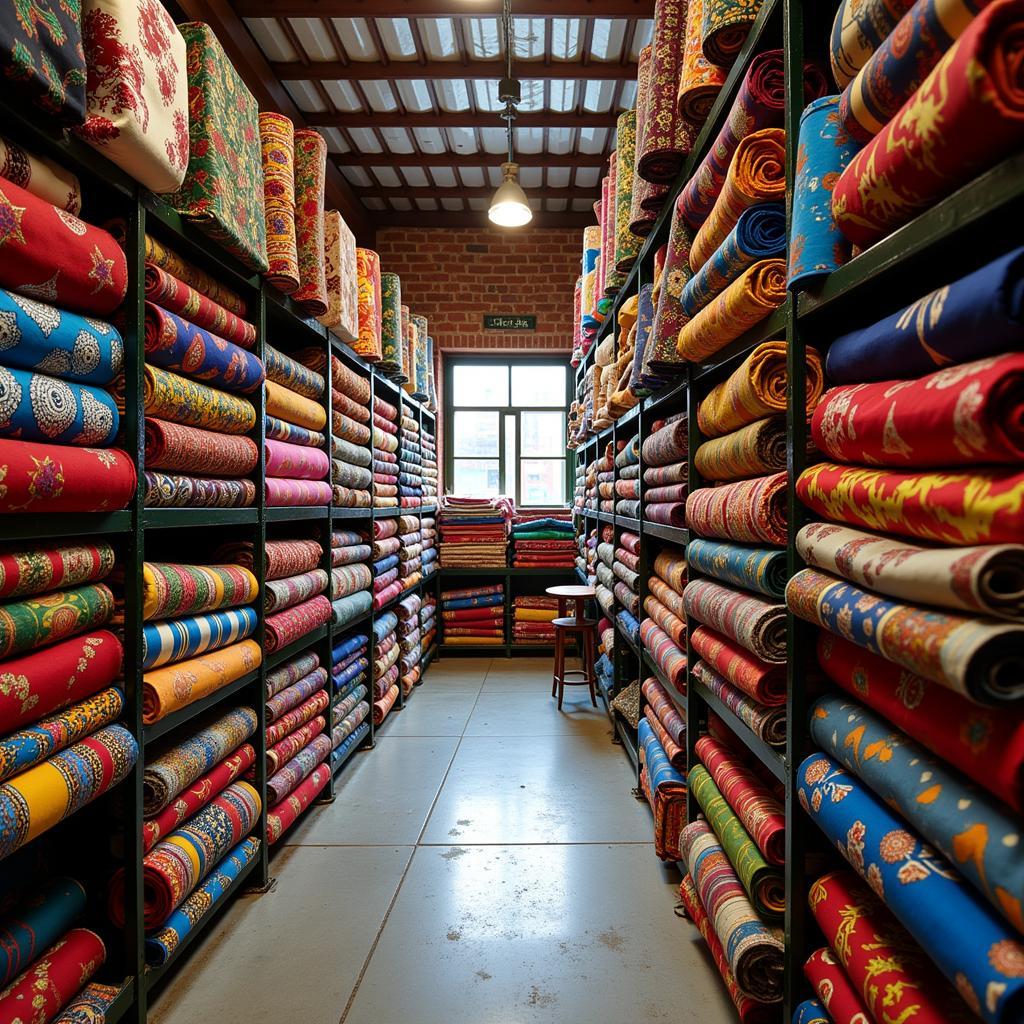A Guide to Traditional African Costume Male Attire
African men’s clothing is a vibrant tapestry of culture, tradition, and style. From the flowing robes of North Africa to the intricate beadwork of Southern Africa, each region boasts a unique approach to male attire. “African Costume Male” is a broad term encompassing a diverse range of garments that reflect the continent’s rich heritage and artistic ingenuity.
This guide will delve into the fascinating world of traditional African costume for men, exploring its history, symbolism, and regional variations. We’ll uncover the stories woven into the fabrics and discover how these garments continue to inspire contemporary fashion.
The Significance of African Costume Male attire
In many African cultures, clothing is more than just a means of covering the body. It serves as a powerful form of nonverbal communication, conveying social status, age, ethnicity, and even spiritual beliefs. For men, clothing often plays a crucial role in ceremonies, rituals, and everyday life.
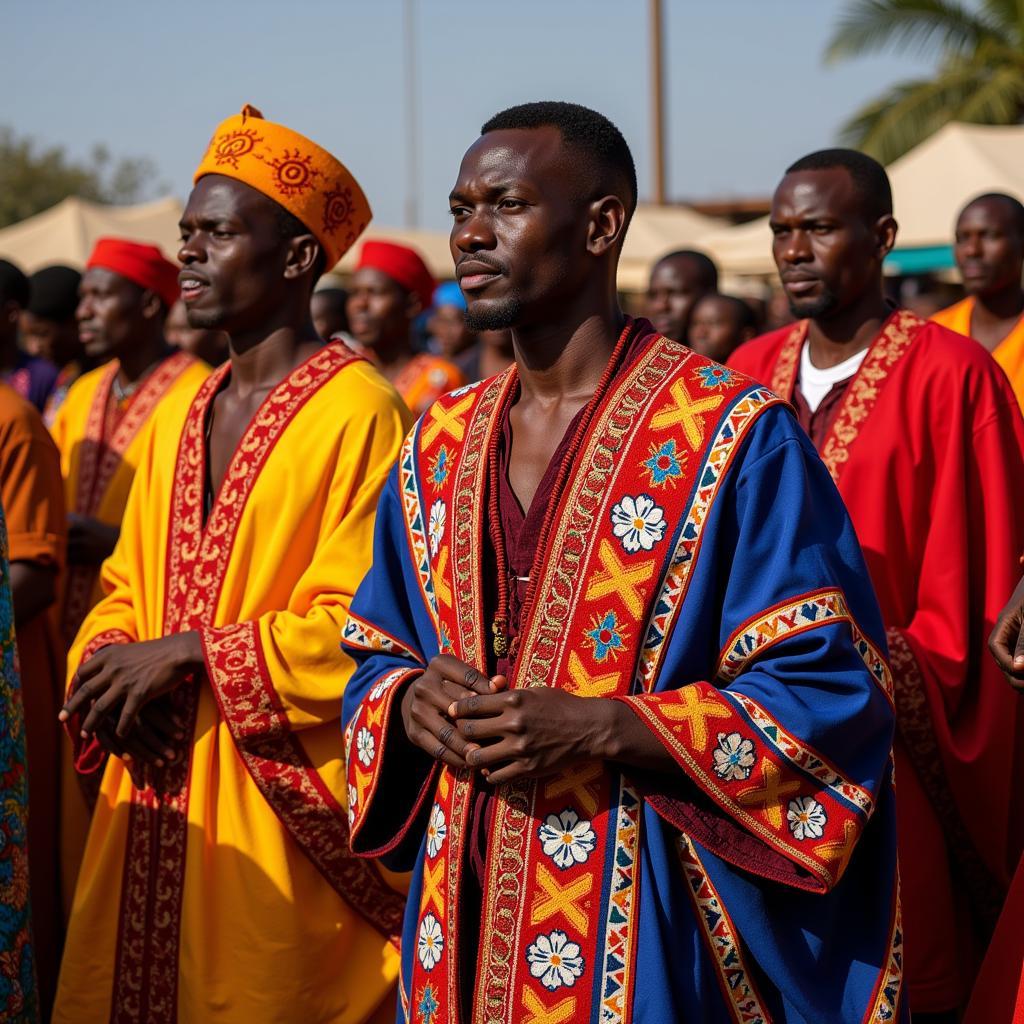 West African Ceremonial Robes
West African Ceremonial Robes
For instance, a man’s headdress can signify his tribe, marital status, or position within the community. The colors and patterns woven into fabrics often hold symbolic meanings, representing everything from fertility and prosperity to strength and courage. Understanding the significance behind these elements provides a deeper appreciation for the artistry and cultural depth embedded in African costume male attire.
Regional Variations in African Costume Male
The vastness of the African continent is reflected in the diversity of its traditional clothing. Let’s embark on a visual journey across different regions, exploring the distinctive styles and materials that characterize African costume male attire:
West Africa: A Tapestry of Colors and Patterns
West Africa is renowned for its vibrant textiles and flowing garments. The iconic “boubou,” a long, loose-fitting robe, is a staple in many West African countries, including Senegal, Gambia, and Mali. These robes are often made from brightly colored fabrics like “kente cloth,” handwoven from silk and cotton, featuring intricate geometric patterns that hold cultural and historical significance.
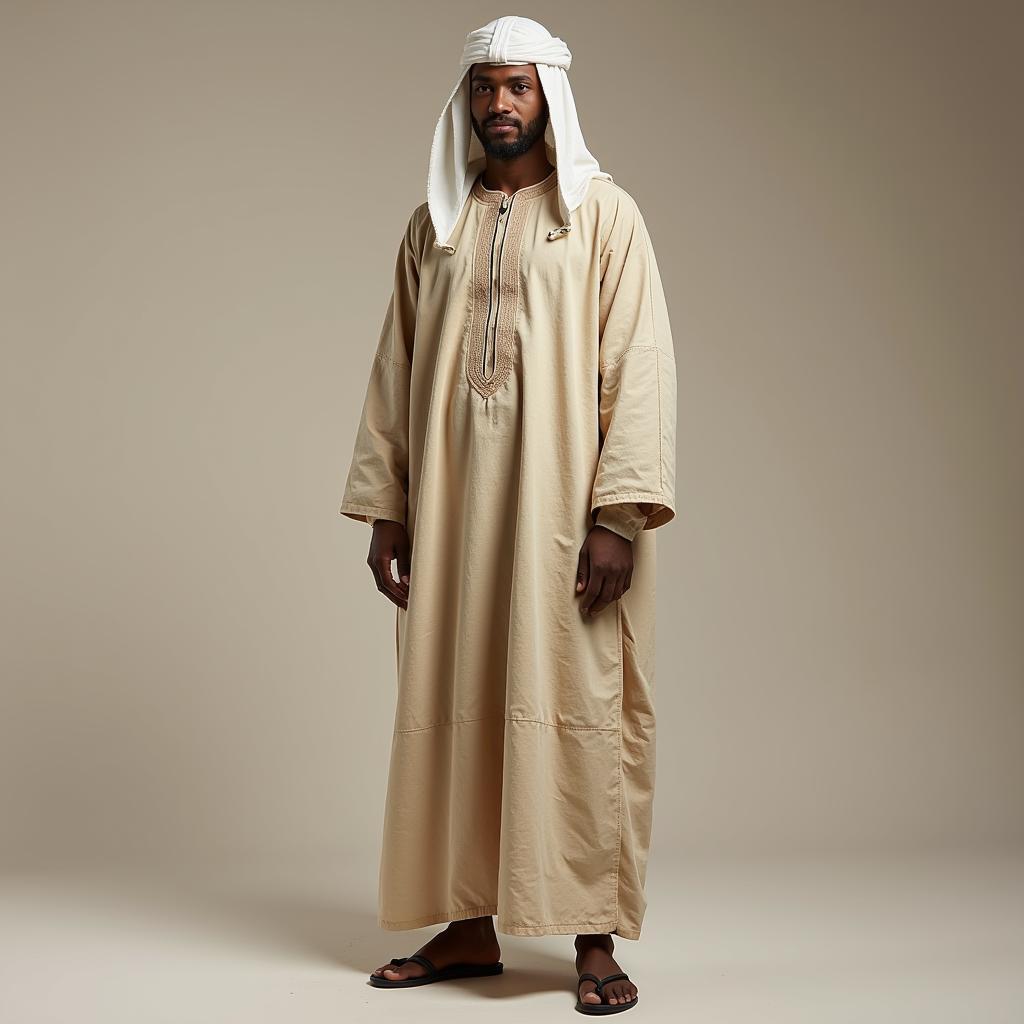 Northern African Djellaba
Northern African Djellaba
North Africa: Elegance and Simplicity
In contrast to the vibrant hues of West Africa, North African men’s clothing often emphasizes elegance and simplicity. The “djellaba,” a long, loose-fitting robe with a hood, is a common sight in countries like Morocco and Algeria. These robes are typically made from wool or cotton and come in neutral colors like white, beige, or brown. The “burnous,” a long cloak often worn over the djellaba, provides warmth and protection from the elements.
East Africa: Influences from Trade and Tradition
East African male attire reflects a blend of influences, drawing inspiration from both ancient traditions and centuries of trade with the Middle East and Asia. In Ethiopia, men wear the “kemis,” a long, white cotton tunic, often paired with a colorful shawl or scarf draped over the shoulders.
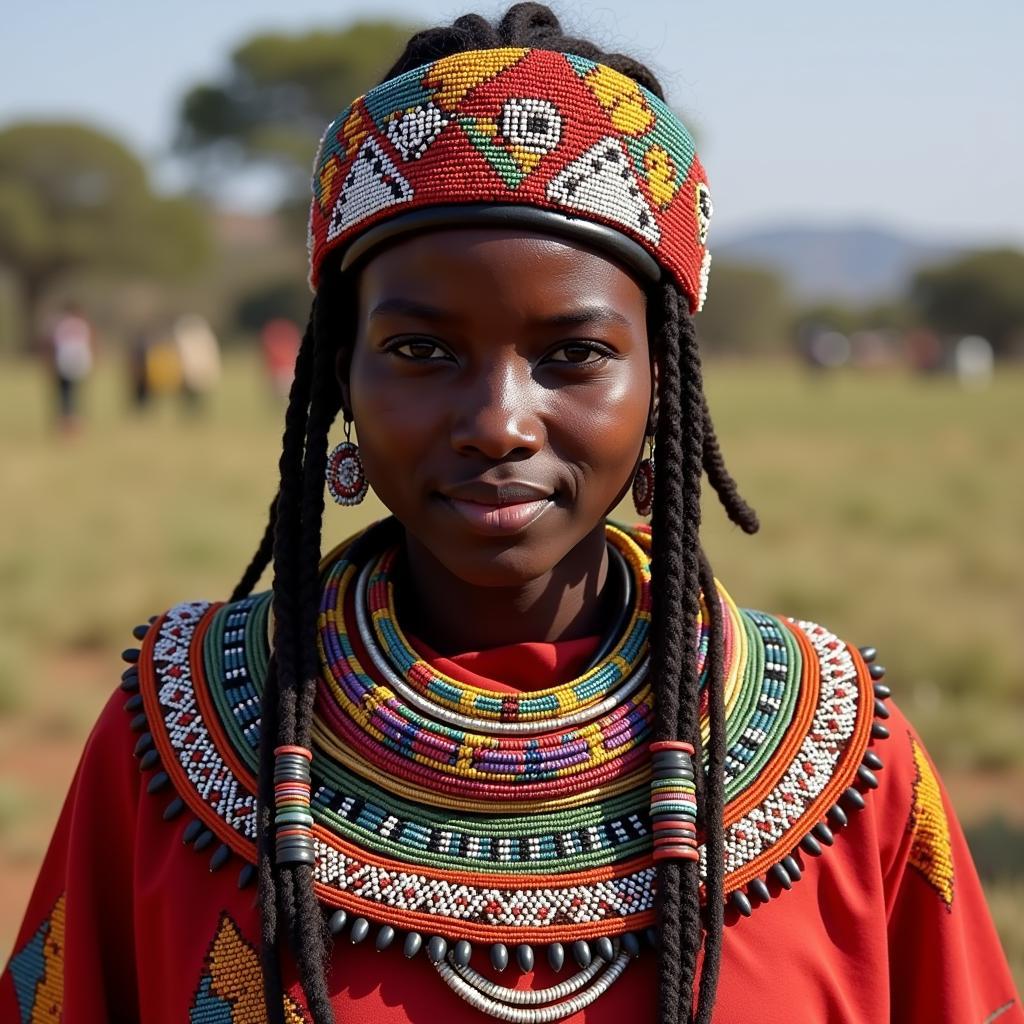 East African Maasai Warrior
East African Maasai Warrior
The Maasai people of Kenya and Tanzania are known for their striking red shukas (blankets) and intricate beadwork. These elements are essential to their cultural identity and play a significant role in ceremonies and rituals.
The Evolution of African Costume Male: From Tradition to Modernity
While traditional African costume male attire remains deeply rooted in cultural heritage, it has also evolved over time, incorporating modern influences and adapting to contemporary lifestyles. Today, we see a resurgence of interest in African fashion, with designers drawing inspiration from the continent’s rich textile heritage and reinterpreting traditional garments for a global audience.
One notable example is the growing popularity of the “African print” shirt, a modern take on traditional African fabrics, featuring bold colors, geometric patterns, and contemporary cuts. These shirts have transcended cultural boundaries and are embraced by men worldwide, showcasing the versatility and timeless appeal of African design.
Conclusion: Celebrating the Diversity and Beauty of African Costume Male
From the intricate beadwork of the Maasai to the flowing robes of West Africa, African costume male attire offers a captivating glimpse into the continent’s diverse cultures and artistic traditions. These garments tell stories of heritage, resilience, and creativity, passed down through generations and continuing to inspire contemporary fashion. As we’ve explored the rich tapestry of African costume male attire, we’ve witnessed how clothing can transcend its practical purpose and become a powerful expression of identity, belief, and belonging.
